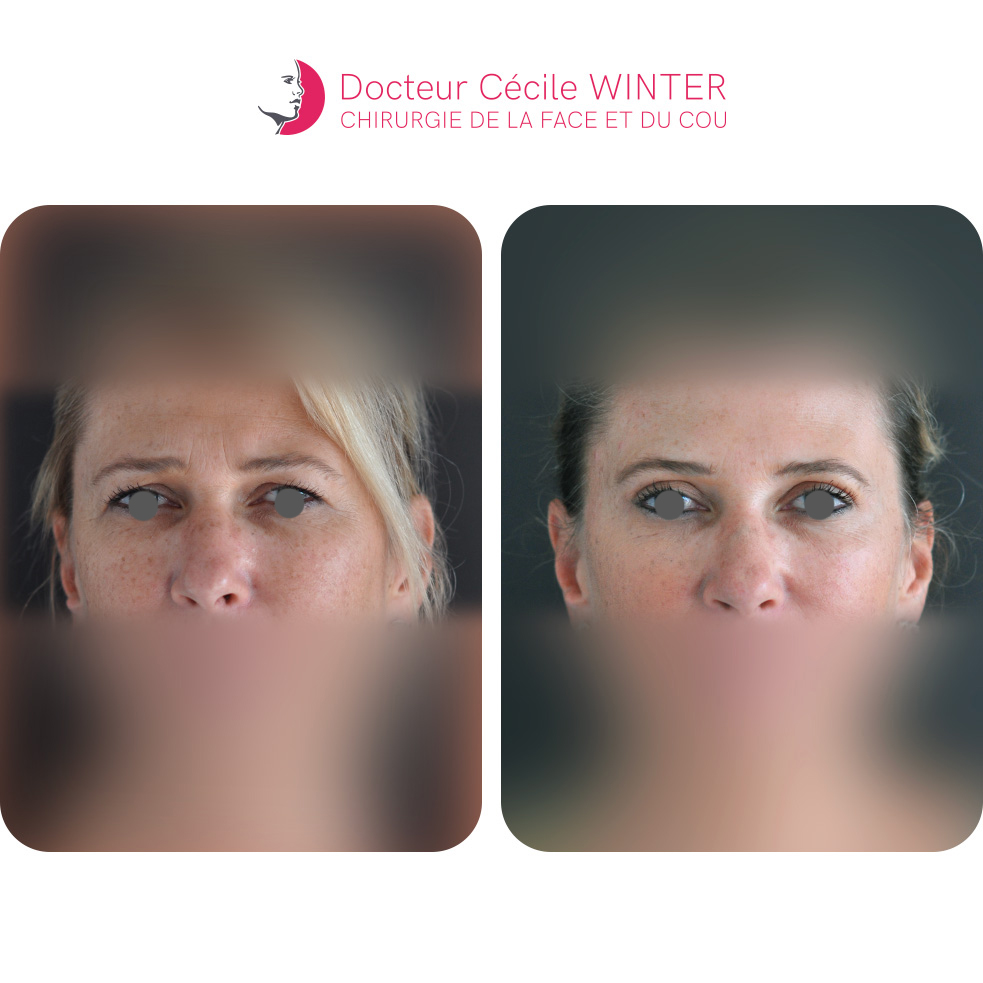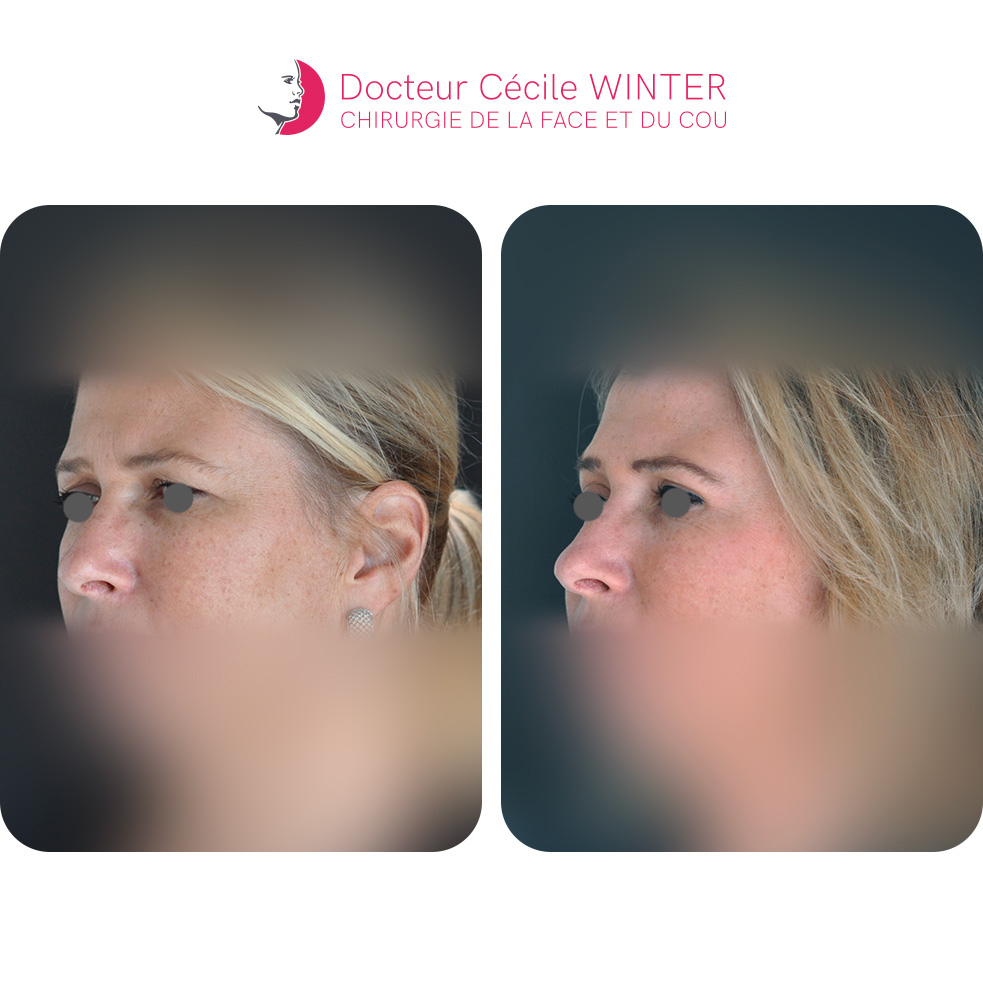Patient 4



Upper Eyelid Surgery
Upper eyelid surgery is indicated when an excessive amount of skin covers the free eyelid and maximal medical treatments such as Botox and/or hyaluronic acid support on the temples have been surpassed. This excess skin, known as blepharochalasis, often leads to visual fatigue and headaches caused by the hypercontraction of the frontal muscles that lift the eyebrows and upper eyelids. In advanced cases, it can even result in a reduction of the visual field.
This surgery, also called upper blepharoplasty, involves removing the excess skin through a small incision mostly hidden in the supratarsal fold. From an anatomical perspective, the eyelid’s role is to protect the eyeball by closing. Thus, the pretarsal eyelid, which is the mobile part near the lashes, is preserved.
The procedure is performed under light general anesthesia, without intubation, allowing the use of a state-of-the-art electronic scalpel that both cuts and cauterizes at the same time. As a result, bruising is rare.